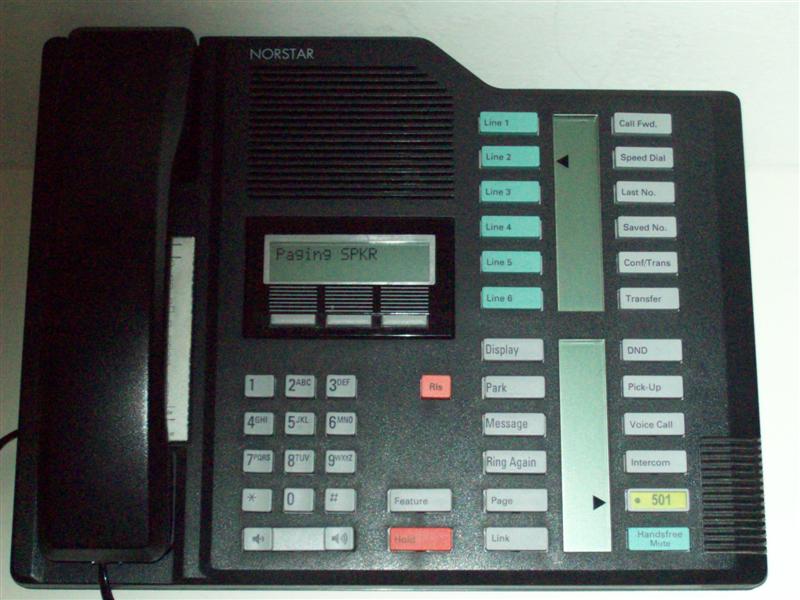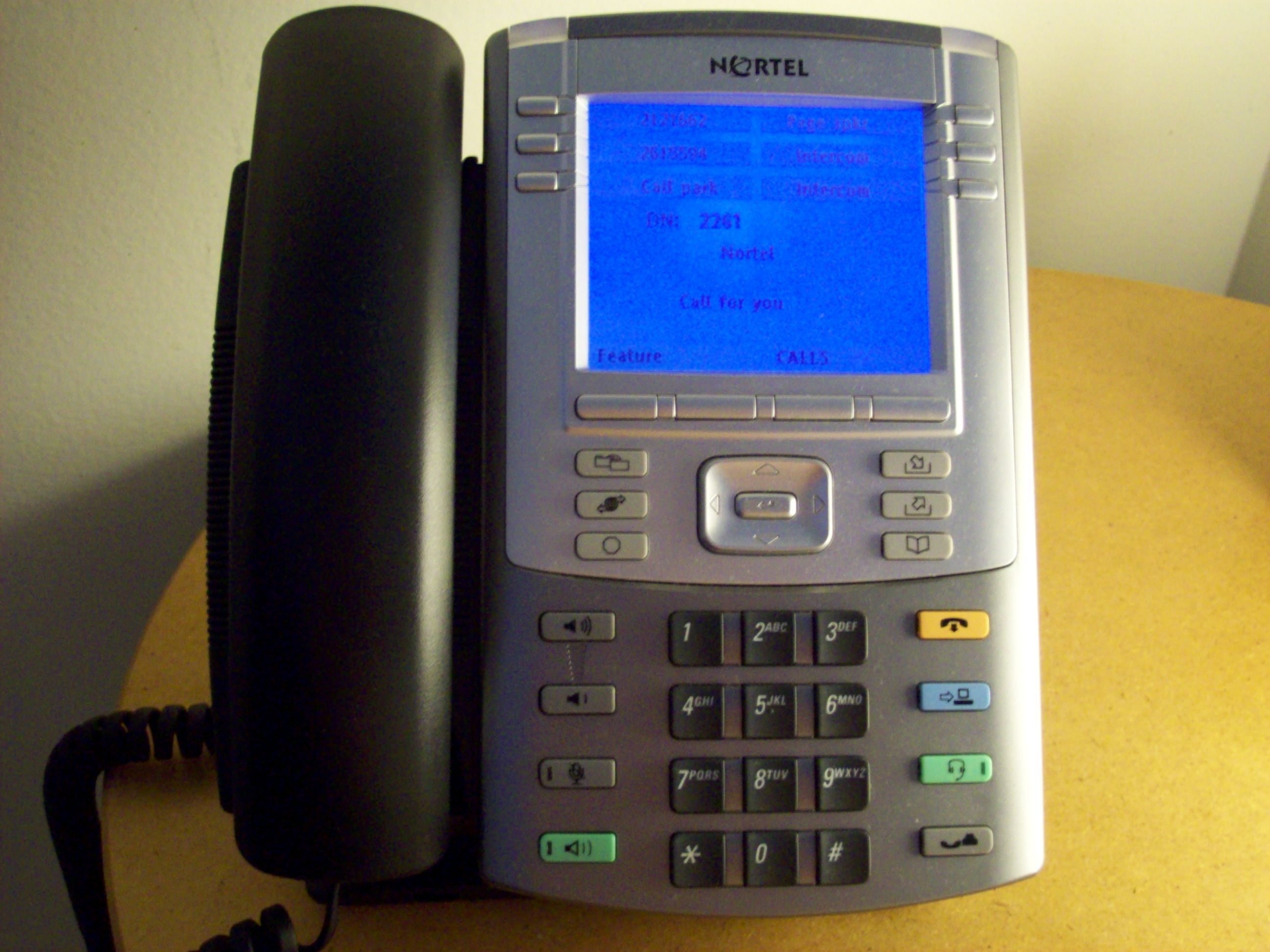Meridian Norstar on:
[Wikipedia]
[Google]
[Amazon]
 The Nortel Norstar, previously the Meridian Norstar, was a small and medium-sized business digital
The Nortel Norstar, previously the Meridian Norstar, was a small and medium-sized business digital
 With the advent of LSI ICs, also called integrated circuits in the 1980s, key telephone system design went from electro-mechanical parts to electronic or fully digital parts. The first key system developed by Northern Telecom in the early 1980s was the Vantage TDD system. Unlike the success of the SL1 system, the Vantage system did not catch with the business environment and the Meridian Norstar was developed as its replacement.
In 1988, Nortel developed the Meridian Norstar system. This system directly competed with the AT&T Merlin,
With the advent of LSI ICs, also called integrated circuits in the 1980s, key telephone system design went from electro-mechanical parts to electronic or fully digital parts. The first key system developed by Northern Telecom in the early 1980s was the Vantage TDD system. Unlike the success of the SL1 system, the Vantage system did not catch with the business environment and the Meridian Norstar was developed as its replacement.
In 1988, Nortel developed the Meridian Norstar system. This system directly competed with the AT&T Merlin,

 The Norstar system is no longer produced by Nortel and branded as the "Nortel Norstar" system. The recommended migration path from the Norstar to a full VOIP/SIP system is the Avaya IP Office, although it was previously the Nortel BCM which is short for Business Communication Manager. There were two systems available, the BCM50 for smaller enterprises with 3-30 extensions and the BCM450 which allows up to 300 sets. The BCM200, BCM400, and BCM1000 were older releases of this same platform. After Avaya's acquisition of Nortel's Enterprise Division, it announced that the Norstar and BCM systems would continue being manufactured, but under the Avaya name. Avaya rolled out cards that supported the Nortel sets on the IP Office platform. Nortel features and programming would be preserved, but would accompany Avaya features and programming as well.
For clients that want to move from the Norstar digital system format to a VOIP format, IP Office is the replacement product recommended by Avaya.
The Norstar system is no longer produced by Nortel and branded as the "Nortel Norstar" system. The recommended migration path from the Norstar to a full VOIP/SIP system is the Avaya IP Office, although it was previously the Nortel BCM which is short for Business Communication Manager. There were two systems available, the BCM50 for smaller enterprises with 3-30 extensions and the BCM450 which allows up to 300 sets. The BCM200, BCM400, and BCM1000 were older releases of this same platform. After Avaya's acquisition of Nortel's Enterprise Division, it announced that the Norstar and BCM systems would continue being manufactured, but under the Avaya name. Avaya rolled out cards that supported the Nortel sets on the IP Office platform. Nortel features and programming would be preserved, but would accompany Avaya features and programming as well.
For clients that want to move from the Norstar digital system format to a VOIP format, IP Office is the replacement product recommended by Avaya.
 The Nortel Norstar, previously the Meridian Norstar, was a small and medium-sized business digital
The Nortel Norstar, previously the Meridian Norstar, was a small and medium-sized business digital key telephone system
A business telephone system is a telephone system typically used in business environments, encompassing the range of technology from the key telephone system (KTS) to the private branch exchange (PBX).
A business telephone system differs from ...
introduced by Nortel
Nortel Networks Corporation (Nortel), formerly Northern Telecom Limited, was a Canadian Multinational corporation, multinational telecommunications and data networking equipment manufacturer headquartered in Ottawa, Ontario. It was founded in ...
(formerly Northern Telecom) and later sold to Avaya
Avaya LLC(), formerly Avaya Inc., is an American multinational technology company headquartered in Morristown, New Jersey, that provides cloud communications and workstream collaboration services. The company's platform includes unified commun ...
. It featured automatic call distribution
An automated call distribution system, commonly known as automatic call distributor or automatic call dispatcher (ACD), is a telephony device that answers and distributes incoming calls to a specific group of terminals or agents within an organiz ...
, and supported up to 192 extensions. In the United Kingdom
The United Kingdom of Great Britain and Northern Ireland, commonly known as the United Kingdom (UK) or Britain, is a country in Northwestern Europe, off the coast of European mainland, the continental mainland. It comprises England, Scotlan ...
it was sold by British Telecom
BT Group plc (formerly British Telecom) is a British Multinational corporation, multinational telecommunications holding company headquartered in London, England. It has operations in around 180 countries and is the largest provider of fixed-li ...
, rebadged as the BT Norstar.
History
 With the advent of LSI ICs, also called integrated circuits in the 1980s, key telephone system design went from electro-mechanical parts to electronic or fully digital parts. The first key system developed by Northern Telecom in the early 1980s was the Vantage TDD system. Unlike the success of the SL1 system, the Vantage system did not catch with the business environment and the Meridian Norstar was developed as its replacement.
In 1988, Nortel developed the Meridian Norstar system. This system directly competed with the AT&T Merlin,
With the advent of LSI ICs, also called integrated circuits in the 1980s, key telephone system design went from electro-mechanical parts to electronic or fully digital parts. The first key system developed by Northern Telecom in the early 1980s was the Vantage TDD system. Unlike the success of the SL1 system, the Vantage system did not catch with the business environment and the Meridian Norstar was developed as its replacement.
In 1988, Nortel developed the Meridian Norstar system. This system directly competed with the AT&T Merlin, ROLM
ROLM Corporation was a Silicon Valley technology company founded in 1969 by four electrical engineers: Gene Richeson, Ken Oshman, Walter Loewenstern, and Robert Maxfield. The company is best known for creating a computerized telephone switchi ...
Redwood, Executone/Isotec Hybrid systems, Toshiba DK Strata, and NEC hybrid systems. Unlike the earlier Vantage system, the Norstar went on to be one of the leading telephone systems in the world. It is visible worldwide with installations at major retail chains, educational environments, medical institutions, government facilities, and many places where key telephone systems are required.
The Norstar system went further than the other systems in similarity to a PBX system such as the Meridian SL-1/Meridian 1 system developed in the late 1980s as well. This allowed blurring the distinction of key telephone system versus PBX telephone system. Many features such as Direct Inward Dial, Caller ID
Caller identification (Caller ID) is a telephone service, available in analog and digital telephone systems, including voice over IP (VoIP), that transmits a caller's telephone number to the called party's telephone equipment when the call is ...
, Automatic Call Distribution
An automated call distribution system, commonly known as automatic call distributor or automatic call dispatcher (ACD), is a telephony device that answers and distributes incoming calls to a specific group of terminals or agents within an organiz ...
, and Call Accounting were designed off the larger Meridian 1 PBX, DMS-100
The DMS-100 is a member of the Digital Multiplex System (DMS) product line of telephone exchange switches manufactured by Northern Telecom. Designed during the 1970s and released in 1979, it can control 100,000 telephone lines.
The purpose of ...
and Meridian SL-100 as opposed to being developed as an independent system.
Although there were many hardware/design similarities between the Norstar systems and larger Meridian 1/Meridian SL-100 systems, the telephones themselves could not be used interchangeably between the key system and PBX. They were, however, backward compatible
In telecommunications and computing, backward compatibility (or backwards compatibility) is a property of an operating system, software, real-world product, or technology that allows for interoperability with an older legacy system, or with inpu ...
on their respective switch. That is, the oldest Meridian M7000 telephones can be used on the newest Business Communication Manager system. The latest T7000 series telephones can also be used on an older Norstar system such as the DR5.1. This allows companies to invest in hardware as needed.
Telephone design
When introduced in 1988, Norstar telephones were developed with highly advanced features. The telephones were rugged in design, available in grey, ash and black colors, and featuredLCD
A liquid-crystal display (LCD) is a flat-panel display or other electronically modulated optical device that uses the light-modulating properties of liquid crystals combined with polarizers to display information. Liquid crystals do not em ...
displays, color-coded keys with easy to read fonts, a high quality speaker phone, and a quick reference card located underneath the handset. The handsets were known for their heavy-duty design and high clarity audio.
The Feature key present on each telephone model allowed for access to both advanced features (including paging, transfer, conferencing, and voicemail) and local settings (such as language, display contrast, ring tones, and speed dial).
Migration to BCM (Business Communication Manager)
See also
*Business telephone system
A business telephone system is a telephone system typically used in business environments, encompassing the range of technology from the key telephone system (KTS) to the private branch exchange (PBX).
A business telephone system differs from ...
* Portico TVA
* Telephone hook
A telephone hook or switchhook is an electrical switch which indicates when the phone is hung up, often with a lever or magnetic button inside the cradle or base where a telephone handset resides. It takes its name from old wooden wall telephone ...
References
{{NortelSystems Avaya Nortel products Telephone exchanges